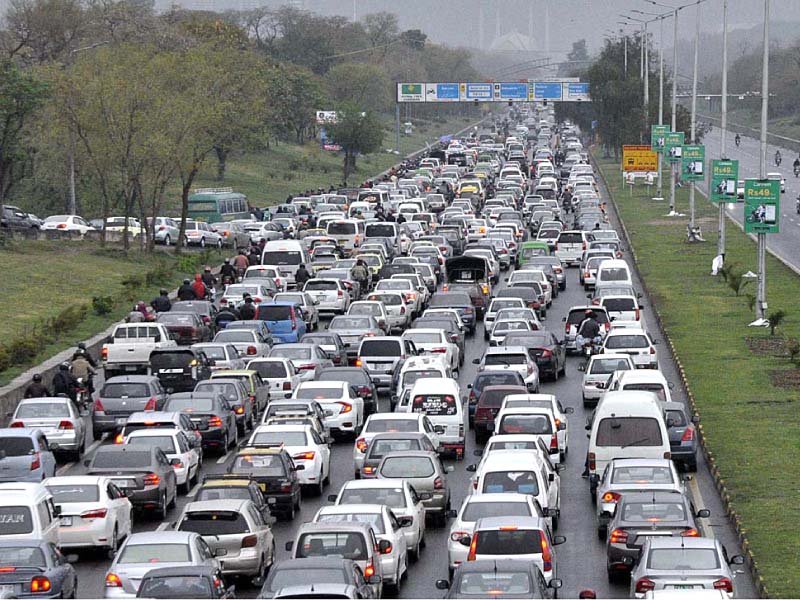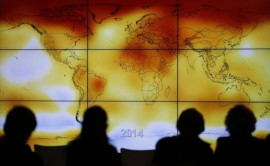
According to an abridged report, titled, “Islamabad Pakistan Climate Change Vulnerability Assessment,” – a copy of which is available with The Express Tribune, reveals that Islamabad is exposed to extremes of climate both in terms of temperature and rainfall.
The report which has been compiled by the UN-Habitat, Pakistan Space and Upper Atmosphere Research Commission (SUPARCO) in collaboration with Islamabad Capital Territory (ICT) and Capital Administration and Development Division (CADD), provides a review of impact of climate change on Islamabad and its future implications while previewing its past weather conditions.
“It is projected that in Islamabad a temperature change until 2039, will be 0.7°C and until 2069, the projected temperature change reaches 2.2°C. This is higher than the 2°C limit that the Intergovernmental Panel on Climate Change has identified as the point beyond which ecological systems (and human systems by extension) may become severely disrupted,” reads the report.
Pakistan's climate change 'time bomb' is already ticking
Islamabad which is being considered as one of the most beautiful capitals of the world because of its weather and breathtaking scenic beauty, environmental experts have warned that temperatures in Islamabad are expected to rise and become more erratic. Moreover, there will also be an increase in the frequency and intensity of hydro-meteorological events over upcoming decades in the capital. They warned that in near future it will become difficult for people to live in Islamabad because of high temperatures and variability in the amount of rainfall.
“In general, over 1991-2010, temperatures across the Islamabad Capital Territory rose at almost double the average global rate. Future temperatures are expected to increase and become more variable. Over recent decades, rainfall also increased in Islamabad Capital Territory, though not uniformly due to increasing variability of hydro-meteorological events,” reads the study. Over 1961-1990, the hottest temperature recorded in Islamabad was 46°C in June 2005. Meanwhile, over 1993-2012, there were eleven days when the temperature exceeded 44°C.
Based on the comparison of temperatures over 1961-90 and 1990- 2010, it clearly depicts that the Islamabad Capital Territory has become warmer and will become more in coming decades.
“The average temperature in Islamabad has been increased by 3-degree centigrade since the base period 1961-1990, however, a significant rise was noticed between 1990 and 2010” according to the report.
On the other hand, during the period from1961 to 2010, a surge in an amount of showers had been witnessed.
“However, over 1990-2010 the rate of increase in rainfall slowed and in some cases even decreased slightly. In this way, while the overall pattern is one of a moderate increase in rain, the recent trend has been towards decreasing rain. In addition, variability has increased significantly in recent years. This means that within the context of a slight overall increase in precipitation there can be both extended dry spells, leading to droughts, and more intense rainfall, which can lead to flood,” reads the report.
The study also revealed the highest recorded precipitation in Islamabad in 1976 was 1557 mm and the lowest was 582 mm in 2009. On 23 July 2001, Islamabad received 620 mm of rainfall in 10 hours - the heaviest rainfall in 24 hours recorded anywhere in Pakistan during the past 100 years.
“This reflects that the level of rainfall is highly unpredictable and can vary greatly from year to year,” says the report.
Meanwhile commenting on the impact of climate change on Islamabad, former Director General Pakistan Environment Protection Agency (Pak-EPA) Asif Shuja Khan said that due to global warming summers are expanding and demand of water is increasing and its availability is decreasing with an alarming rate. According to the study on average, groundwater in Islamabad is depleting at the rate of 1.7 metres per year.
“Currently one of the major and burning issues of Islamabad is acute shortage of water and it has become challenging to cater to the need of the population of Islamabad which is expanding at the rate of 4.9% per year and is more than double of the national average.”
He warned that if water woes in Islamabad are not addressed and remained ignored by the department concerned, then time is not too far when it will be difficult for the people to live in the capital especially during summer.
Khan further said that besides climate change other major factors that contributing to increasing temperatures in Islamabad is rapid urbanization, infrastructure development, massive chopping of trees, absence of water mapping among others.
“Islamabad is losing its charm, attractiveness, coolness because of these major issues,” he said.
Published in The Express Tribune, March 18th, 2018.




































COMMENTS
Comments are moderated and generally will be posted if they are on-topic and not abusive.
For more information, please see our Comments FAQ